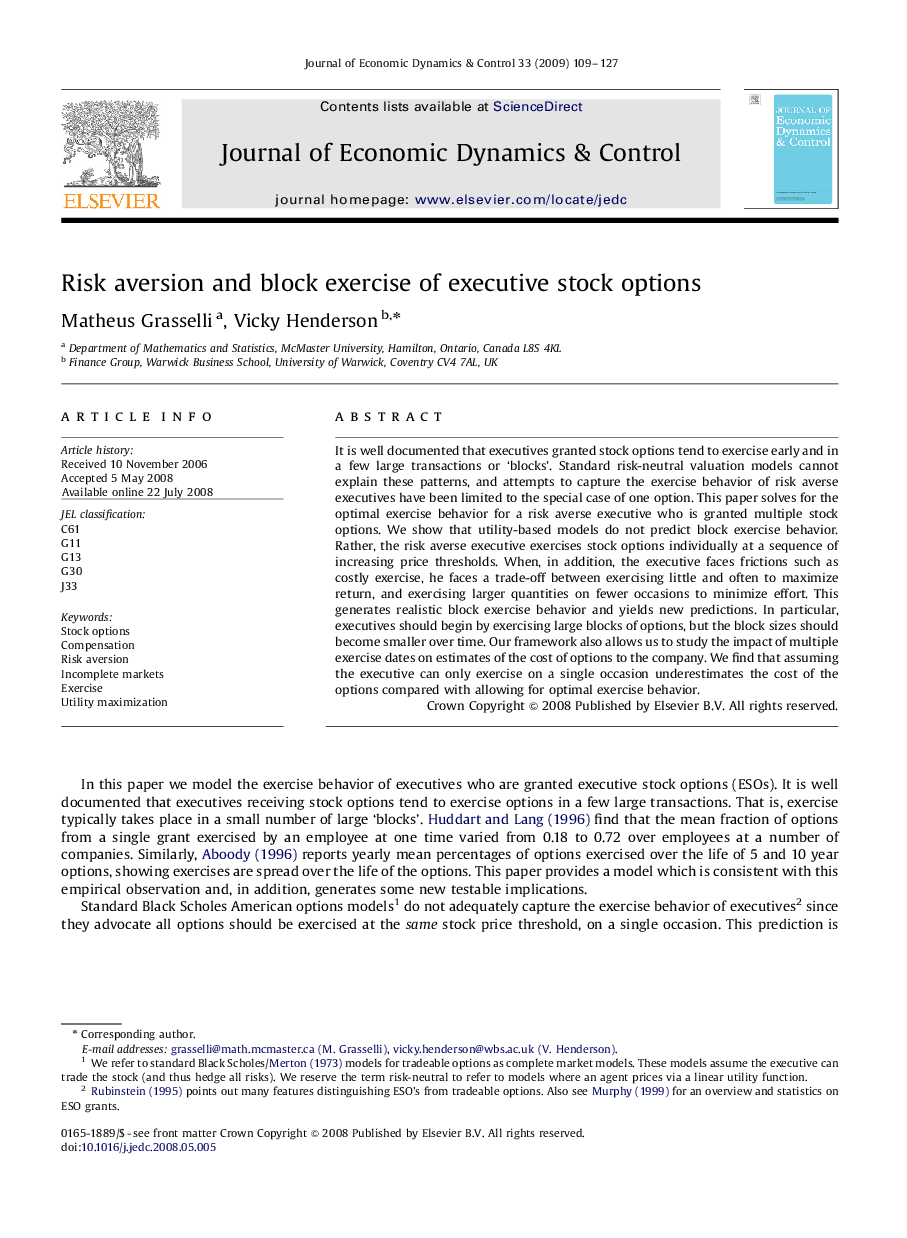| Article ID | Journal | Published Year | Pages | File Type |
|---|---|---|---|---|
| 5099186 | Journal of Economic Dynamics and Control | 2009 | 19 Pages |
Abstract
It is well documented that executives granted stock options tend to exercise early and in a few large transactions or 'blocks'. Standard risk-neutral valuation models cannot explain these patterns, and attempts to capture the exercise behavior of risk averse executives have been limited to the special case of one option. This paper solves for the optimal exercise behavior for a risk averse executive who is granted multiple stock options. We show that utility-based models do not predict block exercise behavior. Rather, the risk averse executive exercises stock options individually at a sequence of increasing price thresholds. When, in addition, the executive faces frictions such as costly exercise, he faces a trade-off between exercising little and often to maximize return, and exercising larger quantities on fewer occasions to minimize effort. This generates realistic block exercise behavior and yields new predictions. In particular, executives should begin by exercising large blocks of options, but the block sizes should become smaller over time. Our framework also allows us to study the impact of multiple exercise dates on estimates of the cost of options to the company. We find that assuming the executive can only exercise on a single occasion underestimates the cost of the options compared with allowing for optimal exercise behavior.
Keywords
Related Topics
Physical Sciences and Engineering
Mathematics
Control and Optimization
Authors
Matheus Grasselli, Vicky Henderson,
